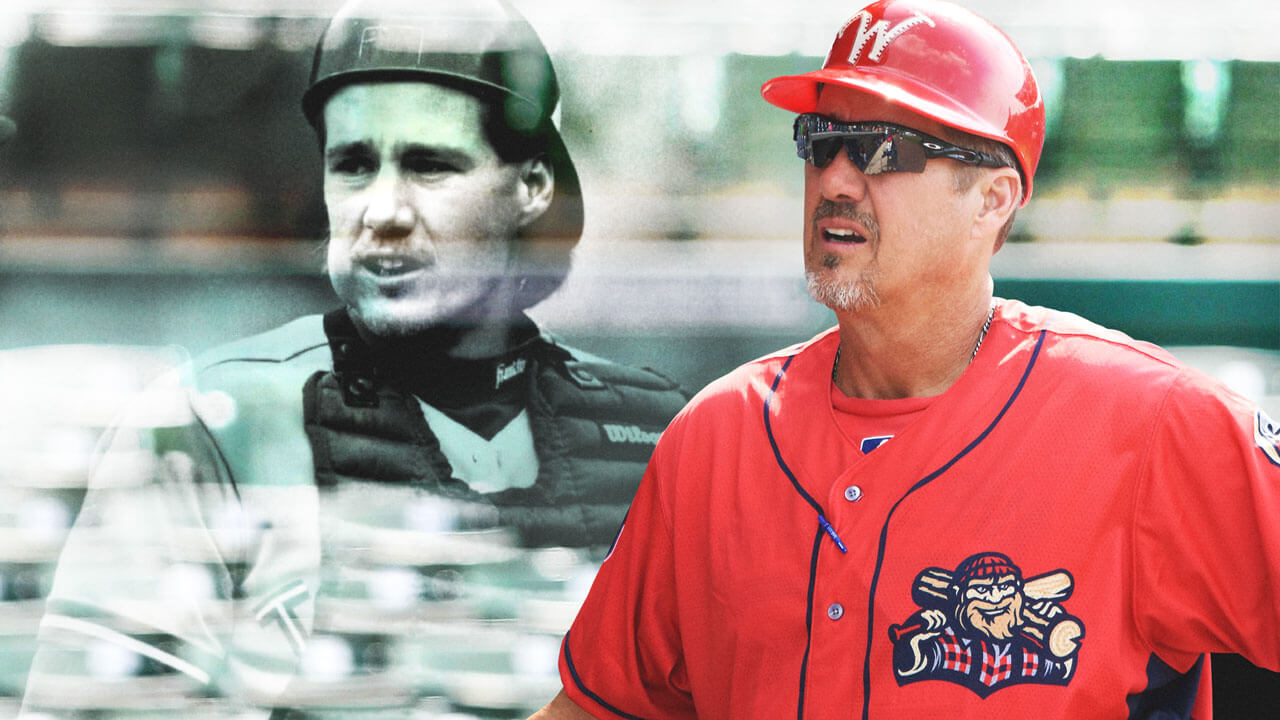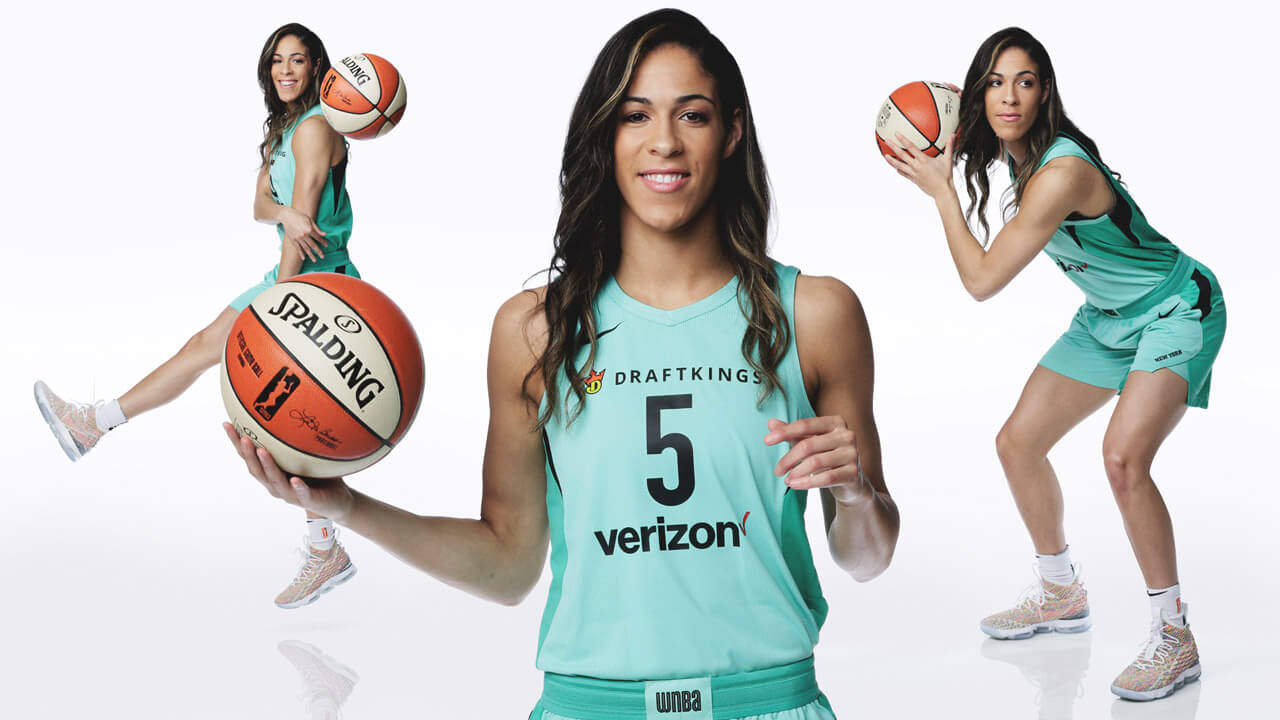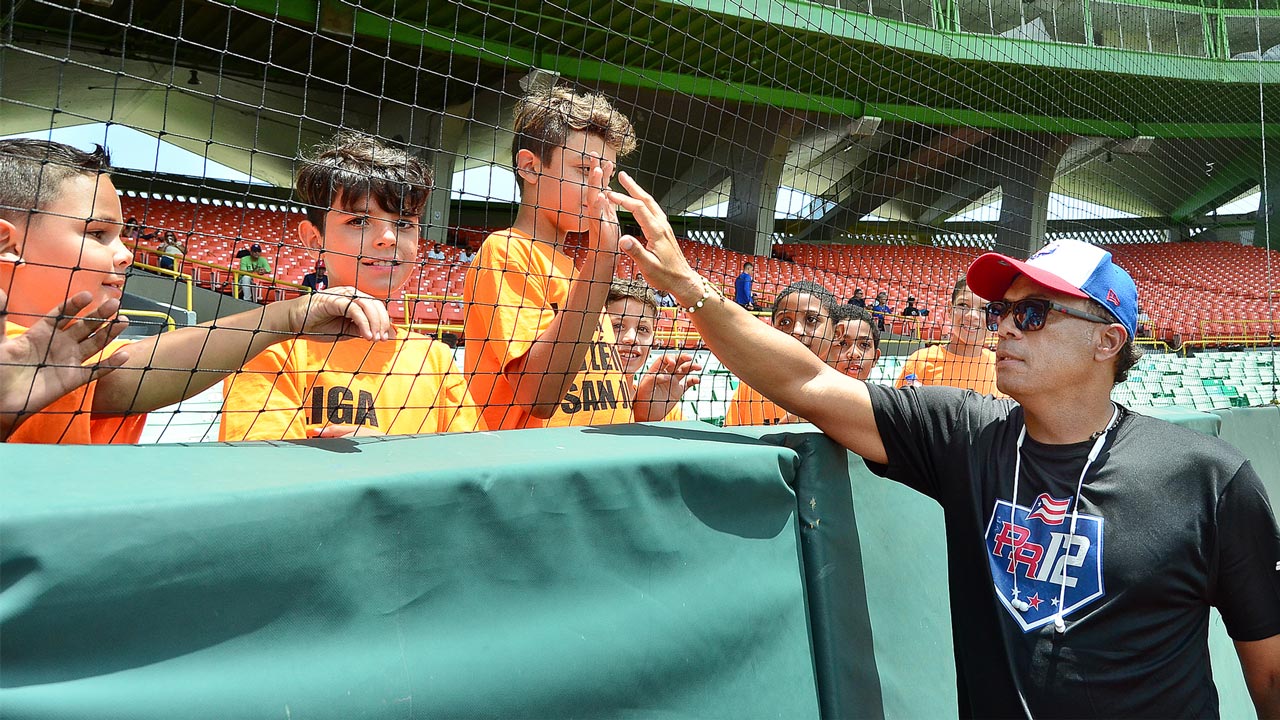It’s just before lunchtime on a late August Tuesday. Nathan MacKinnon, still somewhat bed-headed, walks up to his front door and hits the buzzer to unlock the gate to the private road out by Grand Lake, about a half hour and, oh, several million dollars from the neighbourhood he grew up in. A couple of minutes later, he hits the buzzer again, this time to unlock the gate to his just-built summer place. Everything around him is conspicuously new. The living room is under-furnished and not yet much decorated. You won’t find a splatter mark on the chrome in the kitchen or the commercial-sized barbecue out back. The pool has been filled but not yet drained. The Sea-Doos down at the dock have been gassed up only a handful of times. The putting green out front hasn’t endured a Nova Scotia winter, not a single spate of sleet.
Everything bespeaks summer leisure. It seems like a place where an NHL veteran, his fortune made, would spend his hard-earned retirement. Or maybe, like a place a star in mid-career would retreat to, his refuge after the heavy weather of long season. The manor, however, is that of the soon-to-be-23-year-old MacKinnon.
While his guest pulls up in a rental car, MacKinnon walks out to his coach house — yes, a coach house — and powers open a pair of wide garage doors that overlook the water. Behind them lies what is really the only fully furnished room at Chez 29: MacKinnon’s home gym. The space is the anti-House of Pain. It’s spotless, though it’s now seeing its first off-season of sweat. And it’s outfitted with state-of-the-art equipment, built to specs detailed by the guest MacKinnon has just buzzed in: Andy O’Brien, trainer to NHL stars.
A native of Charlottetown, P.E.I., O’Brien serves as the director of sport science and performance for the Penguins during the regular season and spends his summers working with clients who rank in the NHL’s elite, including MacKinnon and his next-door neighbour on Grand Lake, Sidney Crosby. O’Brien makes regular trips out east in the off-season and MacKinnon has made trips west to work out at O’Brien’s gym in Etobicoke. When they can’t schedule face-to-face time, MacKinnon works out on his own from programs written by O’Brien. He also works with Alex Pianosi, O’Brien’s long-time business partner. Plus, MacKinnon can always get in a skate, some track work and a hill run with his neighbour.
O’Brien is in MacKinnon’s ear as they get work through a warmup and some stretching, but it’s not what you might expect. This isn’t the dynamic of a drill sergeant to a recruit. This isn’t the scene at the NHL combine, where you have staff shouting in the ear of a prospect trying to push through pain on a stationary bike. No, it’s a discussion of restaurants in town, plans for the rest of the summer, changes in downtown Halifax — strictly water-cooler stuff. Only occasionally does something drop that reminds you this isn’t the Y or a Goodlife.
“I was talking to Sid the other day,” O’Brien says. “I said, ‘Look at the three guys from here that I work with’ — y’know, you, Sid and Marshy…” The latter being Brad Marchand, of the Boston Bruins. “…you’re all animals in the gym.”
Yeah, all animals and all All-Stars.
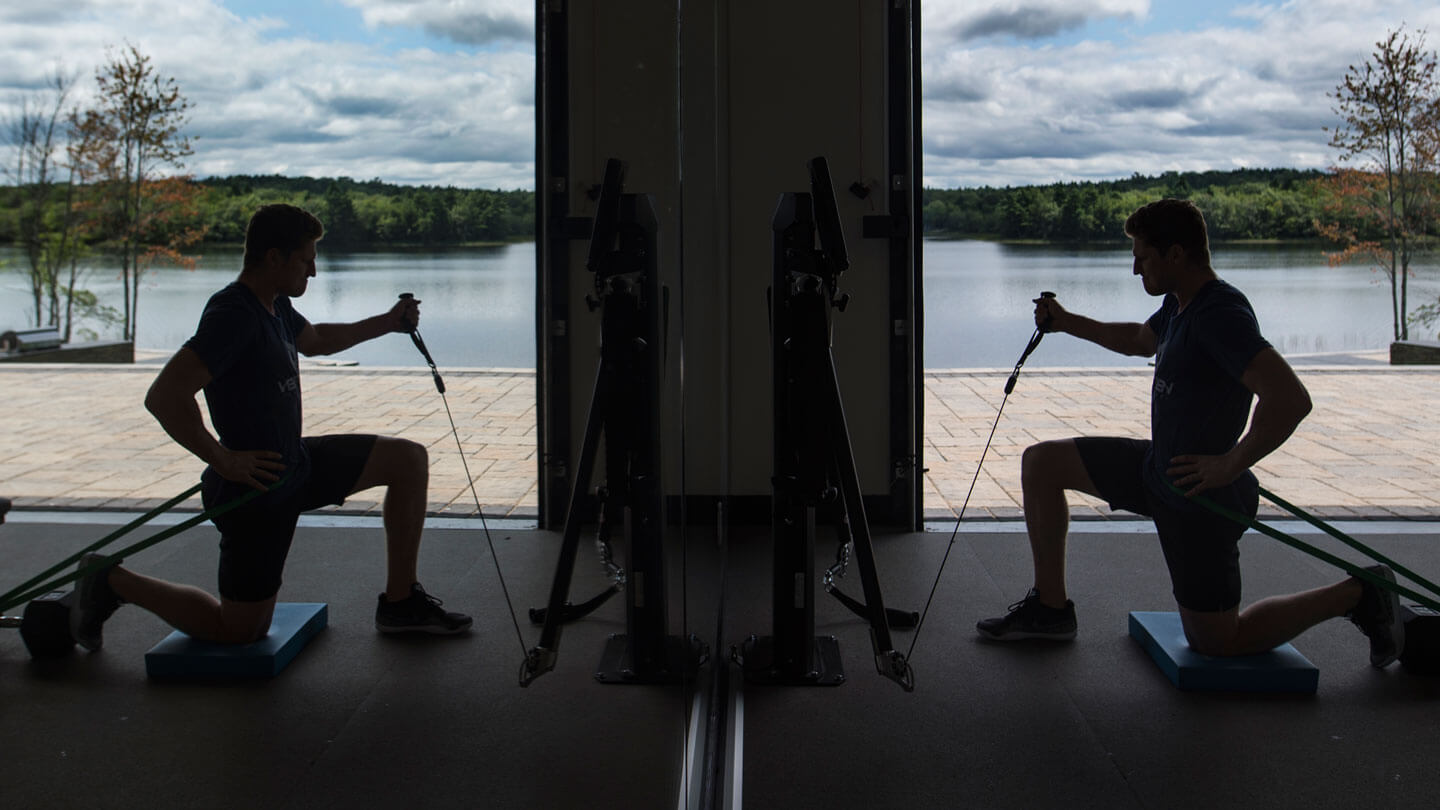
Nathan MacKinnon appears at No. 5 on Sportsnet’s list of the top 100 NHL players of 2018–19 and over the course of last season, no one climbed farther and faster than the Colorado Avalanche centre. Would anyone have had him in the top 50 at this time last year? No chance. MacKinnon was coming off a hugely disappointing 2016–17 season: 16 goals and 37 assists in 82 games for a team that clinched the league’s worst record with about a month left to play. His best season to that point was his first, back in 2013–14 when he scored 24 goals and registered 39 assists, enough to win the Calder Trophy before his 19th birthday.
Last season, though, everything fell into place for MacKinnon. He became the undisputed face of the franchise when Matt Duchene was traded to Ottawa. After landing on Colorado’s first line, with Avs captain Gabriel Landeskog on his left side and Mikko Rantanen on his right, his numbers took a quantum leap: 39 goals and 58 assists, for 97 points over 74 games. If Vancouver defenceman Alex Edler hadn’t caught him with a high hit in late January and put him out of the lineup for a couple of weeks, MacKinnon would have challenged Connor McDavid for the scoring title. Still, by leading the Avs to the playoffs for the first time in four seasons, MacKinnon was one of three finalists for the Hart Trophy and was voted onto the Second All-Star Team, ahead of a few certain Hall of Famers, including Evgeni Malkin and, yeah, MacKinnon’s neighbour on Grand Lake. Some reviews even surpassed that. “[Pittsburgh coach] Mike Sullivan told me after we played against the Avs that Nathan was the best player we faced all season,” O’Brien says.
Did anyone see this coming? The strange thing is that some of the game’s biggest names had strong suspicions that MacKinnon was destined to become not just a franchise player but something more than that. They had seen him do almost unimaginable things, occasionally in games in the league, more than a few times away from the arena. To them it wasn’t a matter of whether he was going to break through, but when — or even why-not-already? They knew all the pieces were there, probably more than MacKinnon himself.
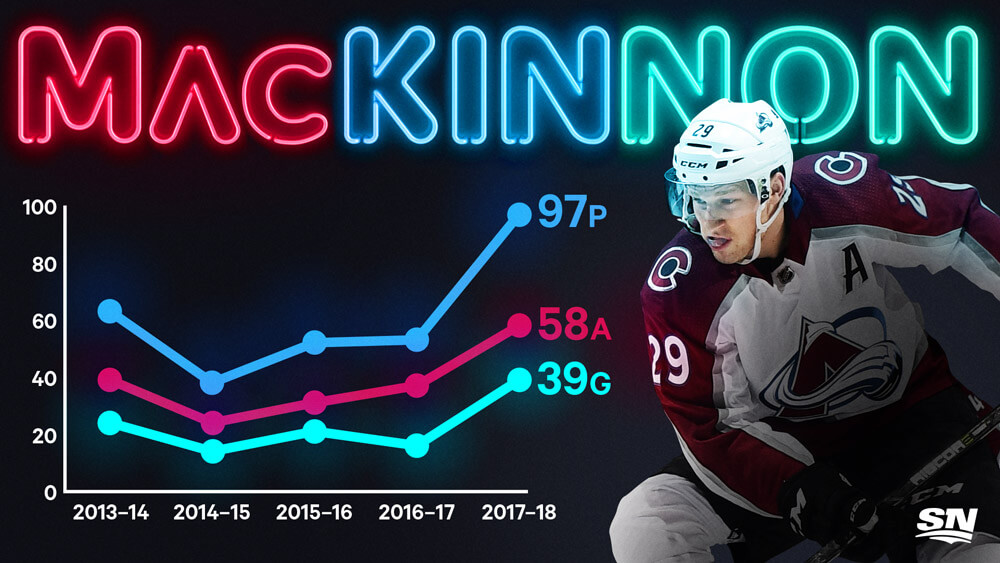
I first talked to Nathan MacKinnon at his parents’ place a few days after Christmas in 2009. I will not lie and claim I knew he was a special player at 14. I had just recognized a good story. MacKinnon was from Cole Harbour, the birthplace of Sidney Crosby. He was tracking a trail blazed by the town’s most famous son. No, he wasn’t the breakthrough player Crosby had been in Nova Scotia youth hockey, but he was close enough to make it clear he was far too good to stay home. Like Crosby had, he enrolled at Shattuck-St Mary’s, the prep school hockey powerhouse in Faribault, Minn. A freshman at home for a brief Christmas break, MacKinnon had a couple of days before his return to Minnesota.
He wasn’t a particularly precocious kid, and seemed singularly unimpressed that a writer and photographer had shown up at his front door. He made us promise not to tell his parents when he went through the ice up to his shin after posing, against their advice, on the semi-frozen lake in back of the family home. Nathan talked about standing on the street not far from his house and watching Crosby parade the Cup past the previous summer. At that point, though, he had never shaken No. 87’s hand, got an autograph or spoken a word to him. “I skated in the same arena at the same time, but not the same sheet,” the teenager said.
That night, Nathan went to a local arena and put himself through a workout, alone on the ice. “It was on his list of Christmas wishes,” his mother Kathy said.
Nathan said he had hoped to play for the varsity as a sophomore the next season. At the same age, Crosby had not only made that team but also scored at will, leading Shattuck to a national title. It seemed a big step — a lot of future NHLers hadn’t made the varsity in Grade 10, Jonathan Toews among them. He ended up just missing the cut.
I had a better sense of MacKinnon as a player the next time I saw him, 21 months later, again out in Halifax. This time he was 11 days away from his 16th birthday, but a lot had changed over that fairly brief time. After failing to make the varsity team as a sophomore, he had put in the season with Shattuck’s under-16 team. He was returning to Canada to play junior, like Crosby had. He had been the first pick in the QMJHL draft in 2011, again like Crosby had.
Unlike No. 87, he was going to play at home. Back in 2003, Crosby had been picked No. 1 by Rimouski and there was no way the Oceanic were going to part with him. In a case of converse intractability, Baie-Comeau had selected MacKinnon in 2011 but there was no way he was going to report there. Under threat of their top pick staying at Shattuck, the Drakkar traded him to the Mooseheads. It wasn’t Lindros and the Nordiques — well, unless you lived in Baie-Comeau.

I came out to Halifax during the Mooseheads’ training camp. I had arranged with the club to meet Nathan before his first pre-season game. I showed up on time and wondered where he was. I didn’t realize that I had walked right by him and not recognized him. Yeah, faces and bodies change in that stretch of late adolescence and I’ve seen it in hockey over the years, but I don’t recall any player who transformed like MacKinnon.
Yet another parallel to Crosby: In the summer after his first year at Shattuck, MacKinnon started working with O’Brien. He’d had a small taste of life under the trainer back when he was peewee-aged. “I did one workout with him, mostly lunges and that sort of thing. Andy asked what I did for workouts and my dad told him I used to run telephone poles on the way home from school with my backpack on. That was my sprint work. That was all I did.”
Though he never came off as even a bit full of himself, MacKinnon was pretty puffed up when he first went to O’Brien that summer. “I had this video of me at Shattuck and thought Andy would watch me skate and be impressed,” he says. “When I was 14 or 15, I thought I was a sick skater. Andy looked and said, ‘Look how bent over you are when you’re skating.’ Mechanically I had a lot to work on. I got humbled quick.”
The regimen that followed was not what the teenager expected. O’Brien reprised the role of Mr. Miyagi in The Karate Kid, you know, the learning-to-walk-before-you-run proposition. That’s exactly what he had MacKinnon do: walk. All summer long. For hours. On a treadmill. Yeah, he had skipped too far ahead when he was running from telephone pole to telephone pole.
It was as boring as it sounds, but a little more intense than you might imagine. It wasn’t a stroll, but rather a steep incline. “We focused on flexing his ankle and positive shin angle,” O’Brien says. “My experience is that it’s hard to train technique later. If you’re three, four, five years in, it’s hard to retrain and correct technique. You can wait for the power. Other than Sid, Nate was the only teenager I worked with where I had the benefit of taking that approach and being able to be patient with the process. If you’re in the NHL, you don’t have the luxury of time.”
“I was so raw that’s really where we had to start, the basics,” MacKinnon says. “I tried to understand what it was that we were trying to do but at a certain level it came down to trust and I just had to trust Andy.”
MacKinnon stuck with the summer sessions — not surprising, given that he was committed enough to go to Shattuck for two years. And not surprising, given O’Brien’s track record, which is basically a drop-out rate of zero. “It takes a certain type of person to sign on,” O’Brien says. “Any of my clients have to be self-motivated. They come to me looking for a way to get better. Looking for any way, whatever it’s going to take.” Effectively, they need a bit of Crosby about them.
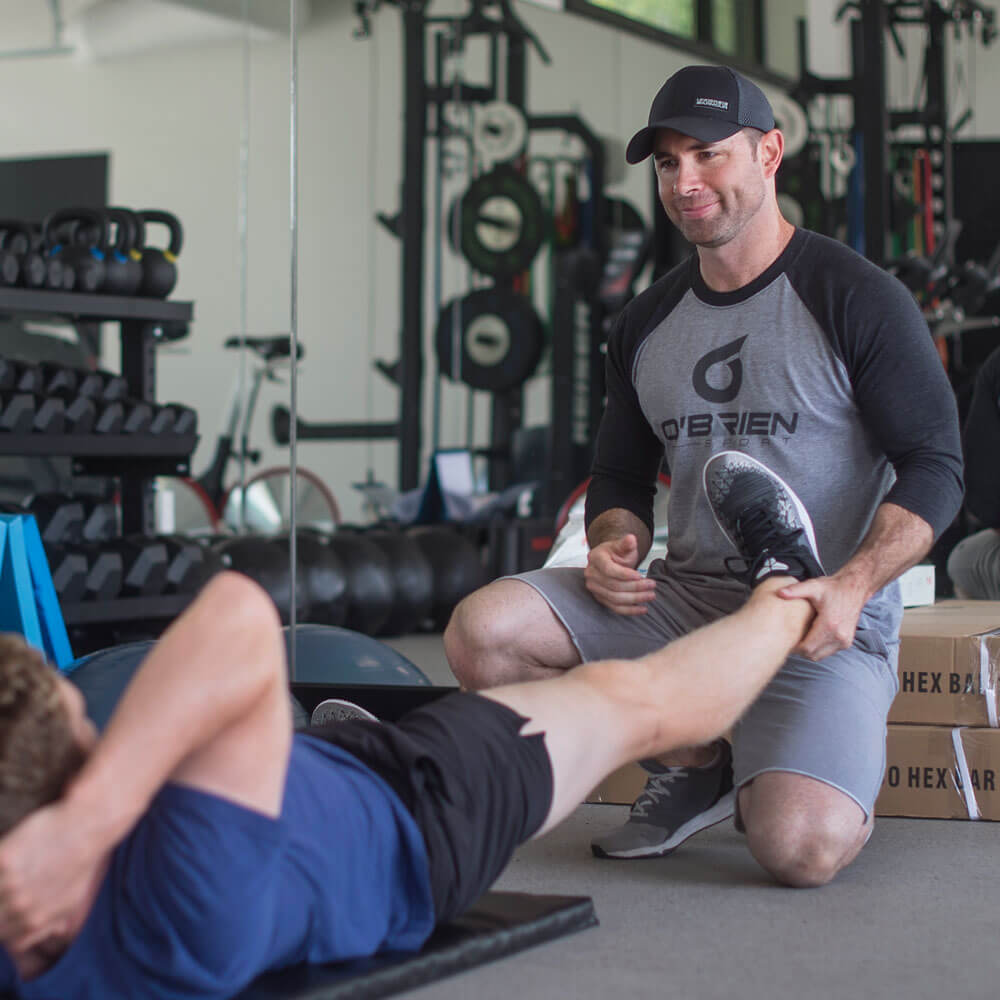
O’Brien says that MacKinnon didn’t put on muscle like Crosby had and that continues to this day — I was a little skeptical when I first heard that. I saw Crosby for the first time back in August ’03, when he was the same age MacKinnon was at the Mooseheads’ camp. MacKinnon looked much more filled-out, but put it down to either the limitations of the eye test or a trick of memory, or both.
MacKinnon’s first game with the Mooseheads was an exhibition against Cape Breton at the Halifax Forum. From his first shift, he had the opposing defencemen struggling to get their legs under them; they couldn’t even begin to deal with his speed. On that shift, he set up Martin Frk for a goal and though he was limited to that assist on the score sheet, he was clearly the most impressive prospect on the ice. MacKinnon, though, was hardly impressed with himself. Today, he admits that he had doubts about making the jump from Shattuck the Q. “I [wondered] what was I getting myself into,” he says. “I didn’t think it would be easy and it wasn’t. Everyone was much bigger and stronger. Everyone was trying to get as big as possible, on the bench [press], whatever. I was 15. I spent the summer walking on a treadmill. I didn’t lift a weight all summer. I’m gonna get f—in’ crushed.”
Those who watched him that first game didn’t share his doubts. “MacKinnon will be a classic power forward,” said Florida Panthers scout Paul Gallagher, who coached Crosby in bantam. “He delivers big hits to make plays. He has an explosive first three steps, as good as anybody you’ll see out there.” Mooseheads’ GM Cam Russell agreed and dared to draw a comparison to a player then bound for the Hockey Hall of Fame. “Nathan’s shown separation speed like Pavel Bure’s,” he said. “He’s only going to get faster as he gets stronger.”
By the end of MacKinnon’s second season with the Mooseheads, he had established himself as the best player in the CHL. He capped his brief junior career with a hat trick and two assists in a victory over Portland in the Memorial Cup final, a championship-game performance that might be the best ever. Still, when it came to the NHL Draft, many scouts had Portland defenceman Seth Jones ahead of him. Some even thought his teammate, Jonathan Drouin, would be better at the next level. Colorado owned the first-overall pick and no one more enthusiastically endorsed the selection of MacKinnon than the Av’s newly appointed coach, Patrick Roy. Having coached the Quebec Remparts, Roy had seen enough of MacKinnon to be emphatic in his decision. “He’s ready to play right now,” Roy said.
Roy’s rookie season behind the Avs’ bench was an unlikely success story. All the analytics suggested the team would again pick in the lottery. Instead, Colorado’s young team won games it had no business winning all season long on the way to a division title. MacKinnon was a driving force behind that unlikely run. “I think I had two goals in my first 25 games, then I got 10 goals in January,” he says. “That’s been my career, really, ever since: Hot and cold, hot and cold. Even as a kid I was hot and cold.”
[snippet id=3322139]
MacKinnon’s wasn’t an Ovechkin-like rookie season, but seemed to skew closer to Calder winners like Jonathan Huberdeau and Jeff Skinner, offering the promise of a good NHL career, a place on the first line soon enough, but not a spot in the NHL’s top 10. Ditto the finalists he beat out in the Calder voting, Tyler Johnson and Ondrej Palat, both of Tampa.
The Avs crashed the next two seasons and MacKinnon’s scoring stats took a hit. When the team signed him to a six-year, $44-million contract in the summer of 2016, it felt based as much on projection as performance. Yes, he had that burst on his first step. Yes, on a good team, he’d show something more. And in short order he did. To disappointment in Colorado, however, it just wasn’t with the Avs.
Nathan MacKinnon seemed to take a big step in the fall of 2016. He was selected to play for Team North America, the most entertaining squad in the World Cup. The attention was focused on Connor McDavid, Jack Eichel and Auston Matthews. No one was looking too hard at the third line of MacKinnon, Calgary’s Johnny Gaudreau and Edmonton’s Ryan Nugent-Hopkins; but no one else on the team of emerging stars made a bigger impression than MacKinnon. In a pre-tournament game, he scored twice against Team Europe, including a dazzling penalty-shot deke. Afterwards Team North America coach Todd McLellan rated him the best player on the ice in that game. He scored twice in three games in tournament play, and one of them had to rank as the prettiest goal of the World Cup: a crazy toe-drag that hung Henrik Lundqvist out to dry and propelled North America past Sweden in overtime.
You assumed that it would be something to build on. Instead, it served as a peak followed by diminishing returns: just 16 goals for a Colorado team that finished 34 games under .500. The admittedly streaky player went a season without a streak or, at least, without one tending in the right direction. “I had a really good summer of work that led up to that fall and then I had a really good World Cup,” MacKinnon says. “Everything was set up. And then I had a disaster of a season. I knew I was better than I performed that season. I just had to believe that to get past it.”
If anyone believed for him, it was O’Brien and those players who gather for his late-summer intensive camp — the last couple of years in Vail, Col. The annual summit is a who’s who of the NHL, including Crosby, Taylor Hall, Jeff Skinner, Jason Spezza and John Tavares. But beyond the famous names and cornucopia of hockey skills, it’s a collection of all-around athletic talent probably without equal outside, say, all-star games or the Olympics, regardless of discipline. It’s also seemingly made up almost entirely of Type A personalities. Sidney Crosby was O’Brien’s first “name” NHL client, and the foundation of the trainer’s reputation in the business. Those who turn out for the intensive camp are the few who could in any way measure themselves against Crosby, the few who could regard him not just as an inspiration but as an example to which they can aspire.
MacKinnon came to this camp for the first time a couple of weeks before he turned 18, just before heading to the Avs’ rookie camp. It was also the first sustained period he had spent around a bunch of NHLers — he had skated with Crosby and a few other pros in Halifax in summer workouts, but then headed back to his parents’ home after practice. Vail was another story completely. Looking back, he was basically thrown into the shark tank for his first swimming lesson. “I just tried to fit in. It helped that by then I was around Sid a bit, but still it was pretty intimidating that first trip,” he says.
In ensuing years, though, MacKinnon didn’t just learn to swim, at some very early point he became a shark. That is to say, he didn’t just fit in with the rest of the A students, he did things they couldn’t, things that left them scratching their heads. MacKinnon will say that Crosby is the best all-around athlete in the NHL. (“Sid can basically do anything, any game,” he says. “And he’s probably the most competitive you’ll ever meet.”) But it was MacKinnon doing things that were completely out of the box in Vail.
The example O’Brien always cites came during a running drill up a steep incline, an anaerobic test that leaves lower bodies awash in lactic acid and has a direct carry-over to the game’s fundamental skill. “It puts you in a biomechanical position very much like skating,” O’Brien says. In one session, MacKinnon ran 14.9 seconds. The second-best time was 15.9; others finished in the 17-second range. By itself, pretty remarkable, but that was only the start.
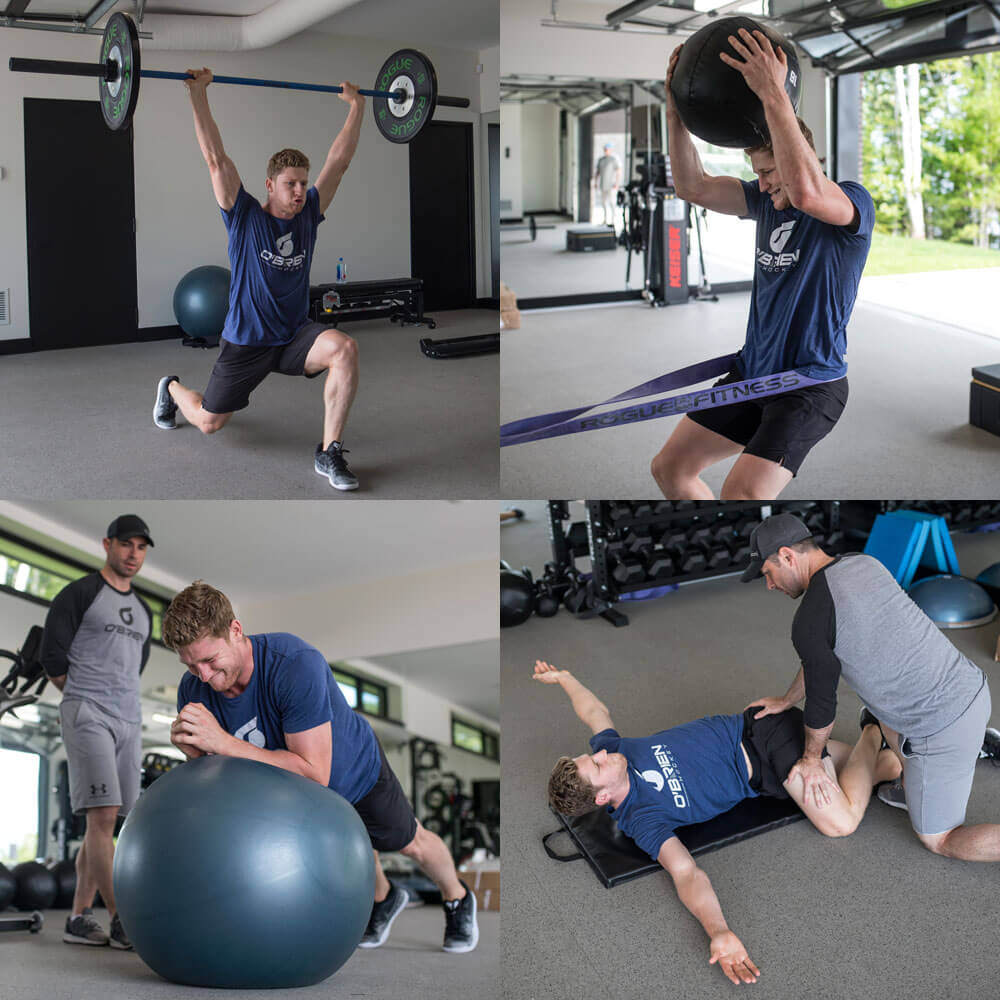
The rest of the field started to tail off as the reps went on. By the fifth or sixth trip, the other campers were dropping a second or more behind their best times. MacKinnon, though, didn’t fade — he kept clocking 14.9, again and again, like clockwork. “Only on the last rep was there any change and it was 15 flat or maybe another tenth, barely anything at all,” O’Brien says. “That hill-running drill, it just shouldn’t work out that way. If your muscle composition is built for power you should fatigue more rapidly than the average and if your composition is for endurance, you shouldn’t be able to explode as well.”
Given the choice of Column A or Column B, somehow MacKinnon alone can order up both.
For any player, an NHL season plays out not just over 82 regular-season games and an indeterminate number in the post-season, but also over 50 or 60 off-season workouts and practices with his team. This is to say, there’s the game that plays out in front of a crowd and then a lot of stuff that goes unseen. In the unseen game, MacKinnon can do stuff that others couldn’t think about. “They’re all exceptional athletes [at the Vail camp] but Nathan is an exception among the exceptions,” O’Brien says.
The grinding hill work is just one example. When you watch videos of their cone drills, the agility tests, you can see that most of the stars in Vail will take quick cross-over steps in lateral movement where Crosby and MacKinnon sometimes burst sideways, more of a split-second plant-and-jump — something that would take the legs out from under average NHLers or even NHLers who average $8 million a season.
Says O’Brien: “I don’t like to do projections about what any player is going to do, at least when it comes to performance in the NHL, but on a purely physical basis I could see Nathan had great genetics to work with … By the time he was old enough to compare to some of the NHL clients I was working with, I had a nice perspective of what he was capable of. He isn’t just able to turn his feet over really quickly, but he has length of stride — in some part because of a significantly longer than average thigh bone and long lower body in general. It’s true both when he’s moving forward and when he’s moving side-to-side. The distance that he creates with a crossover step is like no other player I’ve worked with. That’s why he has such good separation when he goes east-west on a rush. Some athletes are long like Nathan but they don’t have the turnover [on their skates] or the power. He has all of that.”
And it goes beyond just winning the genetic lottery. MacKinnon had a willingness to learn and work. “The mentality to put in the work, willingness and intensity, was there right away, like it was with Sid,” O’Brien says. “I never had to motivate Nate. I just give him the structure and the details and he became a student of it. He wanted to understand everything he could to become a better player.”
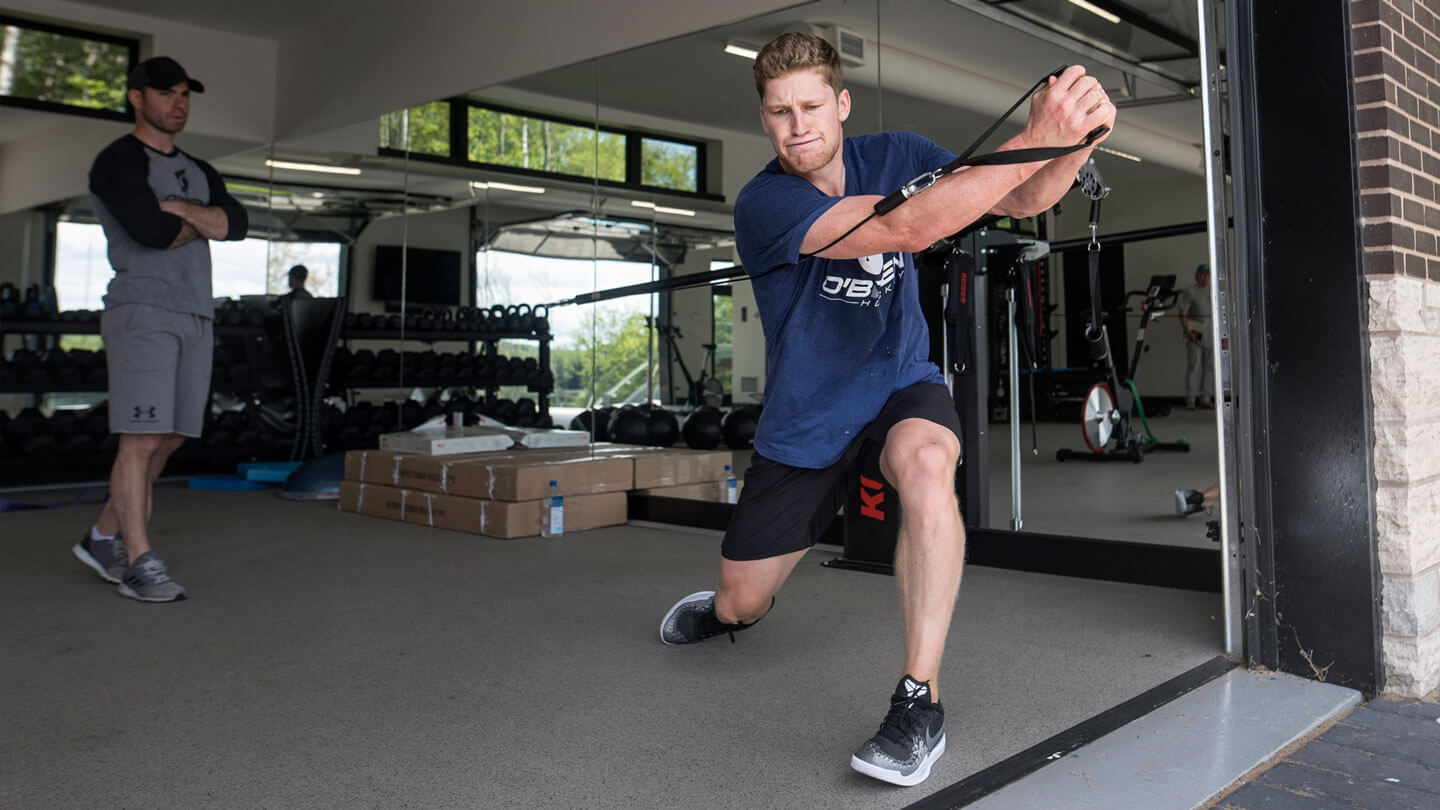
Back on Grand Lake, MacKinnon’s end-of-summer workout is probably not what you’d expect, even with another trip to Vail just days away and the first season after his big breakthrough looming. It’s not long, sweat-drenched hours. Yes, there’s enough sweat that his t-shirt could pass for a dishrag, but it’s not a long grind. The session lasts 75 minutes, barely an hour without the deep stretching in the warmup. That’s not to suggest the workout is casual. It is focused and intense; one-legged squats had to be performed, with every body part recruited and in precise alignment, no cheating, no hunching over with fatigue setting in. O’Brien was there making minute adjustments to ensure MacKinnon’s body position was just so.
Says MacKinnon: “I trust Andy. It would be easy just to do everything the same as we did last season — but we’re trying to fix things and not just be superstitious. Some guys do the same workout plan for their entire careers, do the exact same thing for 20 years. What I love about with working with Andy is that every summer he’ll have 20 new things.”
This summer’s top priority has been injury prevention. If it seems like elite athletes get injured more than you or me, there is obvious reason to this, as O’Brien explains. “Because [elite athletes] can generate so much force, put so much force into the ground, the demands on muscle tissue and connective tissue are greater,” he says. “It’s true of all my NHL clients and, because of his explosive strength, very much the case for Nathan. Muscle tissue that’s built for power isn’t built for resiliency. Injury is a constant concern, especially with Nathan and my other clients who play a lot of minutes and are keyed on by other teams.”
This off-season’s other recurring theme has been rotation. You can see it in play in virtually every exercise MacKinnon works through — trunk rotation is built into the motion. You can see it most dramatically near the end of the workout when he works the pulley system in a motion that replicates the trunk rotation of a wind-up and slap shot. “Whether it’s an upper-body exercise with rotation or a lower-body exercise with rotation,” O’Brien says. “Nathan responded really well to it.”
The sets on the pulley alternate between MacKinnon’s natural right-handed-shot side and his weak side. “Hockey is an asymmetrical game,” O’Brien says. “Because of shooting, hockey players rotate one [direction] more than others and it’s not always the same type of rotation. Some shooters shoot across their body, others off their inside leg. Sid is across his body, Nate is inside leg. We’re not trying to build a symmetrical athlete. We’re not trying to build perfect posture. We’re trying to control the asymmetry. We’re trying to avoid becoming so asymmetrical that it develops into a problem and might lead to injury. We’re trying to make sure those unstable ratios don’t get out of control.”
The workout ends on the stationary bike and the stiffest anaerobic test. MacKinnon moves the bike outside the coach house and turns it to the wall. When he sits in the seat, he’s facing brick, his back to the swimming pool, the lake and all the comforts of summer. And when this station starts in earnest, he is out of his seat, standing up in the pedals, hands extended over his head and against the brick face for minimal support in balancing. O’Brien stands at the side and times each 30-second burst, again looking for MacKinnon’s body to get out of line. The resistance on the bike is dialed up to 24, the maximum. Closing out a very tough hour-long workout, MacKinnon puts in maximum anaerobic exertion across something just short of a game’s worth of ice time — 30 seconds on, maybe 30 seconds off.
After the last interval, MacKinnon staggers off the bike, but in a couple of minutes he has his breath and his senses back and heads for the shower in his new home. By the time he gets to the door, he seems fully recovered, without rubber or starch in his step. His ticket to Vail is booked and he’ll have to get around to packing. Asked what the next season will hold, he equivocates. “It’s not like a movie,” he says. “I can’t say that going into last season I knew that I was going to get 100 points, or that was a goal. I was a 50-point player up to then. I knew I had more in me. I didn’t know what. I just wanted to let myself play free and see what I could do, not try to put a number on it. Before that I’d go in saying, ‘I want to get 70 points this season’ or 60 plus. You put a number on it and it’s like that becomes a ceiling. Players aren’t remembered for what they do in the regular season. They’re remembered for what they do in the playoffs. I want our team to make it into the playoffs. We’ve got a young team. We’ve got something to build on. I want it to be our year.”
From Nathan MacKinnon’s perspective, it might not seem like a movie. To someone who has watched him go from a kid shooting pucks at milk cartons in a driveway to an All-Star at 22 while only just beginning to tap into his gifts, the storyline is straight out of Hollywood and the lead is so dynamic that you’re left to wonder whether he actually just did that or it’s CGI.



